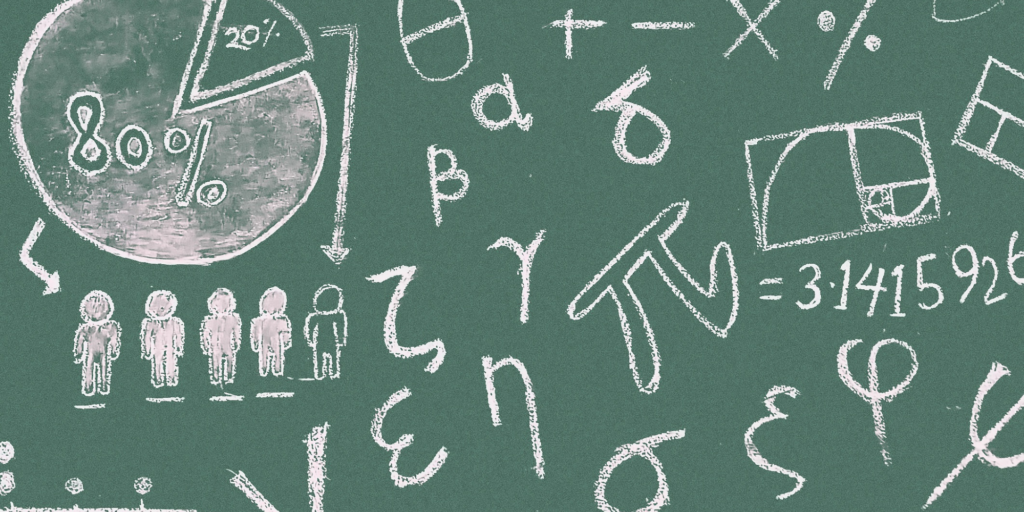By Brit Seward, School Improvement Representative, Mathematics Specialist
Extra! Extra! Read all about it! Largest score declines in National Assessment of Educational Progress (NAEP) mathematics in grades 4 and 8 since initial assessments in 1990.
This dismal headline comes from the Nation’s Report Card released in October 2022. The NAEP Mathematics Assessment measures students’ knowledge and skills in five major areas of mathematics, and their ability to solve problems in real-world contexts. Results for the nation reflect the performance of 116,200 fourth graders and 111,000 eighth graders from 10,970 public schools, private schools, the Bureau of Indian Education schools, and the Department of Defense schools. Overall, thirty-six percent of fourth grade students and twenty-six percent of eighth graders performed at or above NAEP proficiency in mathematics. In Ohio, the numbers are slightly better, with forty percent of students in grade four and twenty-nine percent in grade eight performing at or above proficient (NAEP, 2022). Comparatively, Buckeye Hope sponsored schools showed 26% of students at or above proficient in grade four and 22% in grade eight (Nicol, 2022).
In an era when achievement in mathematics seems to continually decline, when teachers are challenged by educational policies and shifts in evidence-based practices, it is time to consider what is important in mathematics. Often, we focus on the observable differentials between countries, states, counties, districts, and schools within districts; however, there are significant differences in learning outcomes that exist within individual schools between teachers of the same grade-level and subject. Even when the same curriculum and standards are used schoolwide, the lack of horizontal and vertical consistency contributes to the varying learning outcomes students experience in classrooms across America (Karp et al., 2021).
In the book, The Math Pact: Achieving Instructional Coherence Within and Across Grades (2021), the authors outline how following a Mathematics Whole School Agreement (MWSA) can achieve necessary consistency amongst all stakeholders schoolwide. The MWSA refers to “a unified and consistent approach to preferred and precise mathematical language, notation, representation, rules, and generalizations” (Karp et. Al., 2021). The agreement moves away from a fragmented approach toward collective teaching mathematics. A goal of the MWSA should be to multiply the talent of all engaged in teaching children mathematics by building “collective, viral intelligence” (Wiseman et. al., 2013).
One way to do this is to develop a professional oath for mathematics educators. The President of the United States takes the Presidential Oath, Justices of the Supreme court take the Constitutional Oath and the Judicial Oath, and physicians take the Hippocratic Oath. Phi Delta Kappa proposed an educator’s oath (June 1985), and the National Council of Teachers of Mathematics proposed a mathematics teachers’ oath (April 2004). Regardless of the profession, position, or person, oath-taking is recognized as a public declaration of acceptance of responsibility and accountability. As educators, we are responsible for providing equitable and high-quality mathematics instruction. Therefore, we should consider an oath to be taken by all stakeholders who engage with students learning mathematics (e.g., teachers, instructional coaches, paraprofessionals, administrators, etc.).
An Oath for Mathematics Educators
I acknowledge that teaching mathematics is a privilege that comes with great responsibilities. I know that I, like all mathematics educators, must abide by the core values and key purposes for learning mathematics. These values center on broadening the purpose of learning mathematics, creating equitable structures in mathematics, implementing equitable instruction, and deepening mathematical understanding (Catalyzing Change, 2020).
I will create space for students to develop as confident and capable learners who understand and critique the world through mathematics. I will create a sense of community that honors mathematical identity and allows students to experience the wonder, joy, and beauty of mathematics.
I acknowledge the collective responsibility of every adult involved in student learning. I will make every effort to ensure all stakeholders are grounded in the understanding that students learn mathematics more deeply and successfully when everyone knows and follows the same plan.
Therefore, I will collaborate to establish a Mathematics Whole School Agreement. I will address each of the central components: correct and consistent language, precise notation, cohesive and consistent representations, evaluating rules that expire, and developing instructional strategies (Karp et. al., 2021). I commit to share my knowledge and will seek additional help ensuring long-term sustainability in the structuring of our MWSA.
I challenge you to join the movement, commit to establishing a Mathematics Whole School Agreement. Click https://forms.office.com/r/sBFNNL01wS to take the oath.
References
Karp, K. S., Bush, S. B., Dougherty, B. J., Berry, R. Q., & Larson, M. (2021). The Math Pact: Achieving instructional coherence within and across grades. Corwin.
National Council of Teachers of Mathematics. (2020). Catalyzing change in early childhood and elementary mathematics: Initiating critical conversations. Reston, VA: NCTM.
Nicol, S. (2022). BCHF Portfolio Comparison Summary. Columbus, Ohio: Buckeye Community Hope Foundation.
U.S. Department of Education, Institute of Education Sciences, National Center for Education Statistics, National Assessment of Educational Progress (NAEP)Assessment.
Wiseman, L., Allen, L., & Foster, E. (2013). The multiplier effect: Tapping the genius inside our schools. Corwin

